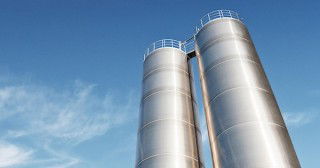Under increasingly stringent pollutant emission standards, deNOx systems are widely used in Chinese cement production. As the calciner is relatively flexible and adjustable in its design, it is a key piece in the process for NOx emissions reduction. Tianjin Cement Industry Design and Research Institute Co, Ltd has been researching NOx emissions reduction technology in cement manufacturing for more than two decades, and in this article charts the development of staged combustion deNOx technology for calciners. By Chen Changhua, Peng Xueping and Lin Minyan, Tianjin Cement Industry Design and Research Institute Co Ltd, China.
Nitrogen oxide (NOx) emissions pollute the atmosphere and pose serious risks to human health and the environment. In China the cement industry is the third-largest source of NOx emissions after coal-fired power plants and vehicle exhaust gases. To strengthen environmental protection, the Ministry of Ecology and Environment of China and local municipal governments have set corresponding emission standards. The current Chinese national standard “Emission standard for air pollutants in cement industry” (GB4915-2013) has set NOx emission limits for cement kiln system exhaust gases at 400mg/m3. Local standards in the provinces of Hebei, Henan, Zhejiang, Anhui, Hunan and Hainan have set the local NOx emission limit to 100mg/m3. Some cities in those provinces have even stricter limits. For instance, Xingtai and Handan in Hebei province have stipulated that the NOx emissions from cement exhaust gases shall not exceed 50mg/m3. Under these increasingly stringent pollutant emission standards, deNOx technology is being widely used in Chinese cement production.
